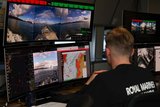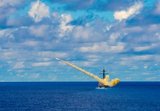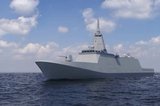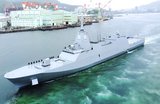US touts enduring Pacific presence as carrier visits Manila
A US aircraft carrier visited the Philippines on 26 June, the third such call in four months, as its commander cited America's ‘enduring presence’ in a region where China's military aims have raised tensions.
The nuclear-powered USS Ronald Reagan docked in Manila after sailing through the disputed South China Sea as part of a mission intended to reassure Washington's allies in the area.
China claims almost the entire sea, through which trillions of dollars in trade passes annually, with competing partial claims from Brunei, Malaysia, the Philippines, Taiwan and Vietnam.
Beijing drew criticism after it landed bombers in May 2018 on a disputed island in the waters and reports emerged that it had installed missiles on another.
The US carrier's commander, Rear Admiral Marc Dalton, told reporters on board that the visit was meant to demonstrate America's dedication to the region.
Dalton said: ‘Countries that are concerned about US commitment can look to the continued routine presence of (the) Ronald Reagan Strike Group as reassurance.
‘We have operated naval forces in the Pacific for seven decades... and that is an enduring presence and an enduring mission that has not changed and it will not.’
This is the third visit since mid-February 2018 of an American aircraft carrier to the Philippines or nearby waters, and comes as Manila takes a non-confrontational approach with Beijing over the South China Sea.
While the Philippines won a key 2016 ruling against China's claims in the waterway, President Rodrigo Duterte has opted to set it aside in order to court Chinese investment and trade.
The Reagan, whose nearly 335m length exceeds the height of the Eiffel Tower, is on a four-day visit to the Philippines.
The Nimitz-class ‘supercarrier’ sails with 5,500 sailors and more than 70 aircraft.
US Navy presence in the region is a flexing of American military muscle that Dalton said was intended to ‘promote adherence to a rules-based international order.’
The Pentagon has criticised ‘intimidation and coercion’ in the disputed waterway, where the People’s Liberation Army Air Force landed long-range bombers for the first time, putting entire Southeast Asia within their range.
Duterte's government has faced pressure at home to get tougher with Beijing, especially after reports emerged in June 2018 that Chinese Coast Guard personnel had taken Filipino fishermen's catch in the disputed sea.
Manila has said it is working closely with China and is registering protests, but quietly so as to avoid confrontation.
The US Navy periodically conducts ‘freedom of navigation’ operations in the South China Sea, where it sails close to island features Beijing has built into military facilities to show it rejects any territorial claims.
Part of the Reagan strike group was the guided-missile cruiser Antietam, which along with a destroyer conducted a freedom of navigation patrol in May 2018 that angered Beijing.
Dalton said on 26 June that China's actions did not deter the US from sailing in international waters.
Dalton said: ‘The United States Navy conducts those (patrols) routinely and we will continue to conduct those routinely.’
More from Naval Warfare
-
![NATO tests use of “undetectable, jam-proof” laser communication in maritime scenarios]()
NATO tests use of “undetectable, jam-proof” laser communication in maritime scenarios
As part of its effort to better prepare its capabilities for operations in contested and congested scenarios, NATO evaluated a Lithuanian ship-to-ship terminal designed to not be susceptible to enemy interference.
-
![US Navy advances with the Harpoon Service Life Extension Programme]()
US Navy advances with the Harpoon Service Life Extension Programme
The US Navy plans to improve Harpoon’s anti-ship and land attack capabilities by equipping the missiles with sensors and technologies required for succeeding in future battlespace.
-
![Mitsubishi eyes future with Australia’s Mogami selection]()
Mitsubishi eyes future with Australia’s Mogami selection
With Australia’s selection of the Mogami-class for Project Sea 3000, Mitsubishi is investigating local production in the next decade as potential export opportunities emerge.
-
![Thales’ new Sonar 76Nano could equip UK Royal Navy on anti-submarine warfare missions]()
Thales’ new Sonar 76Nano could equip UK Royal Navy on anti-submarine warfare missions
The new sonar is designed to equip uncrewed underwater vessels, with the potential to be used by the Royal Navy for its Atlantic Bastion and Atlantic Net missions.
-
![Hanwha wins Australian government approval to increase its stake in Austal]()
Hanwha wins Australian government approval to increase its stake in Austal
The contract would mean the two shipbuilders can collaborate strategically and enhance shipbuilding capabilities in Western Australia.























